Since the first humans walked the earth, our species has been changing the world. Brilliant minds throughout existence have provided us with life-altering inventions and ideas, like medicines that cure our ailments and lengthen our lives, or technology that connects us in ways we never thought possible. The human mind has thought up some incredible things, but not all of those things are good for the earth – or the living organisms inside of it. More and more research has been done in recent years as we have discovered that certain man-made chemicals (PFAS) are harmful not only to our environment, but our bodies as well. Being able to identify these substances is pertinent in the race to lessen their impact on our existence.
What are PFAS?
PFAS is an abbreviation for per- and polyfluoroalkyl substances. These substances are best described as a group of chemicals used to make fluoropolymer coatings and products that resist heat, oil, stains, grease, and water. Increasingly being referred to as “forever chemicals,” PFAS don’t readily break down in the environment. As such, they can also bioaccumulate inside our bodies and other living organisms. Research pertaining to their degradation pathways is still ongoing. As more evidence continues to be unveiled by researchers that certain PFAS are harmful, understanding these man-made chemicals will help us determine what to do to protect ourselves and the world around us. Dr. Dave Alonso, a LECO Corporation Applications Chemist, decided to do his own research regarding PFAS by determining if there was evidence of PFAS within anti-fog solutions.
Using GC-MS to Detect PFAS
Toxicity investigations exist for relatively few PFAS (i.e. PFOS, PFOA), and the bulk of existing literature focuses on analytes that are best separated and identified via LC-MS/MS and LC-IMS-MS. However, some compound classes, like fluorotelomer alcohols, perfluoroalkyl ethers, and short chain perfluoroalkanes are more amenable to separation via gas chromatography thanks to their lower polarity and molecular weights.
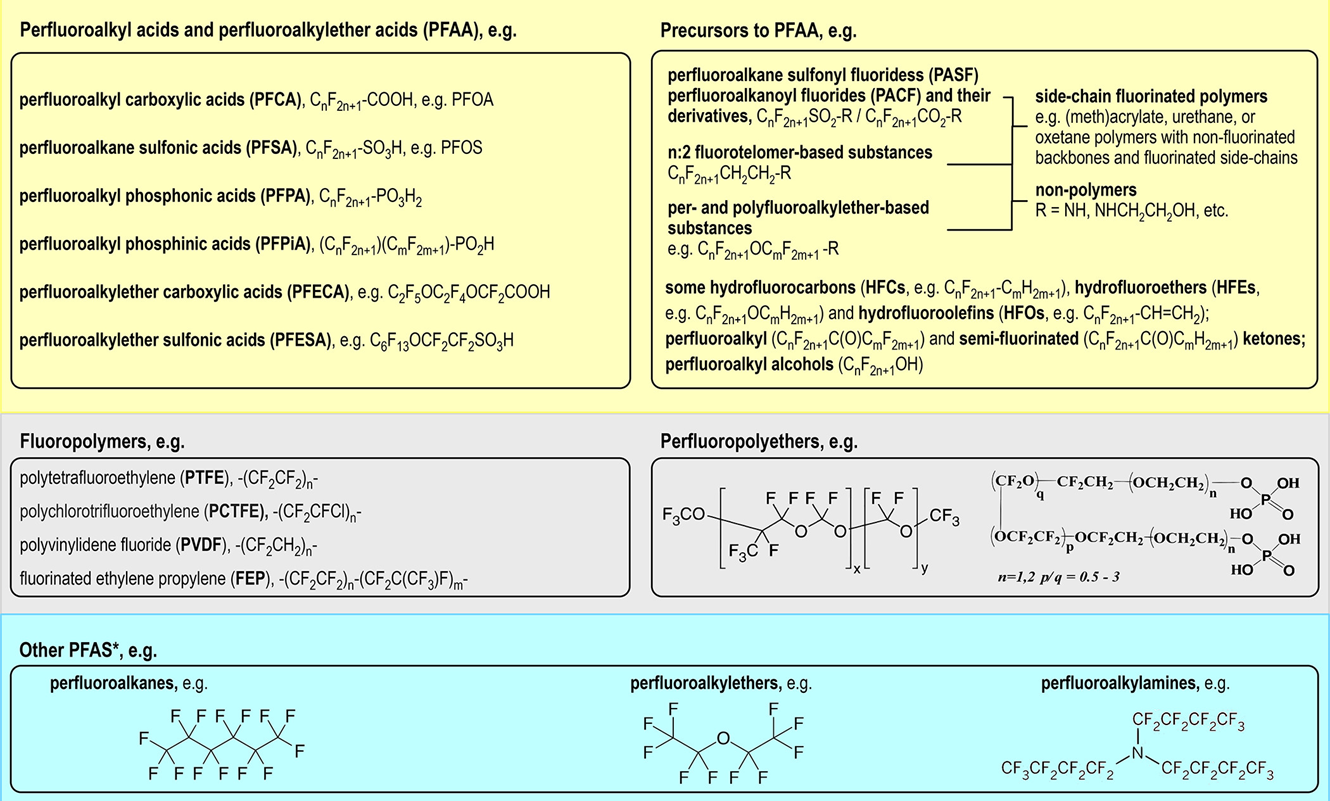
(Kwiatowski et al. 2020)
Because using GC-MS for this kind of work has been rare, chemical standards and the presence of PFAS in mass spectral databases is hard to come by. Dr. Alonso knew he would have his work cut out for him, but with state-of-the-art instrumentation capable of advanced, non-targeted methodologies, he believed identification and characterization of these species was possible.
Testing with the Pegasus® BT
Dr. Alonso began his work by testing five different anti-fog solution samples on LECO’s Pegasus BT. Considered a robust, workhorse of an instrument, the BT is also known for its exceptional sensitivity. Couple that with full-spectrum acquisition, and you’ll get thorough characterizations of samples from their overarching constituents to their most trace components.

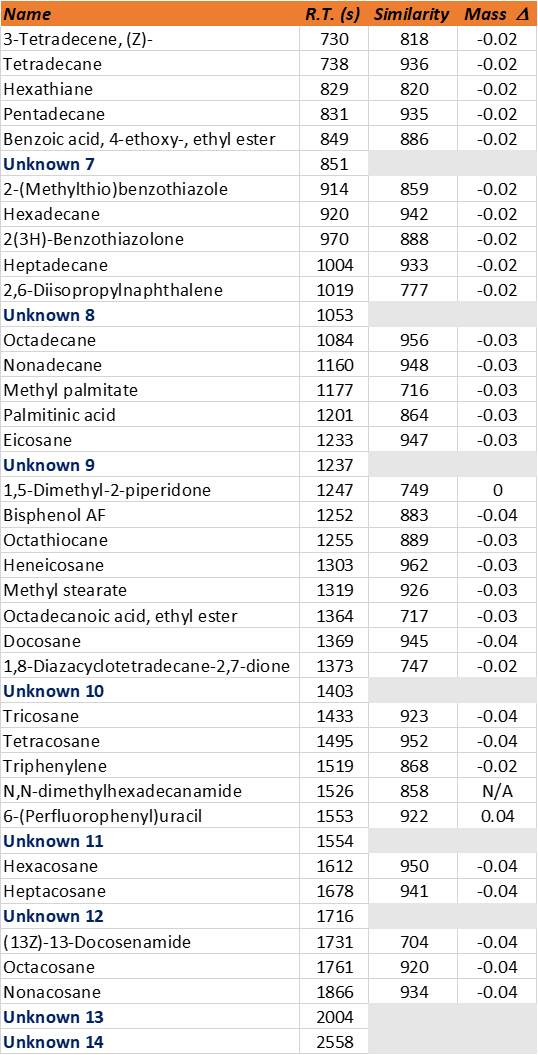
Dr. Alonso’s tests revealed a series of fluorotelomer alcohols among the annotated analytes. When comparing the spectral clues with reference PFAS libraries, however, several additional analytes did not match up.
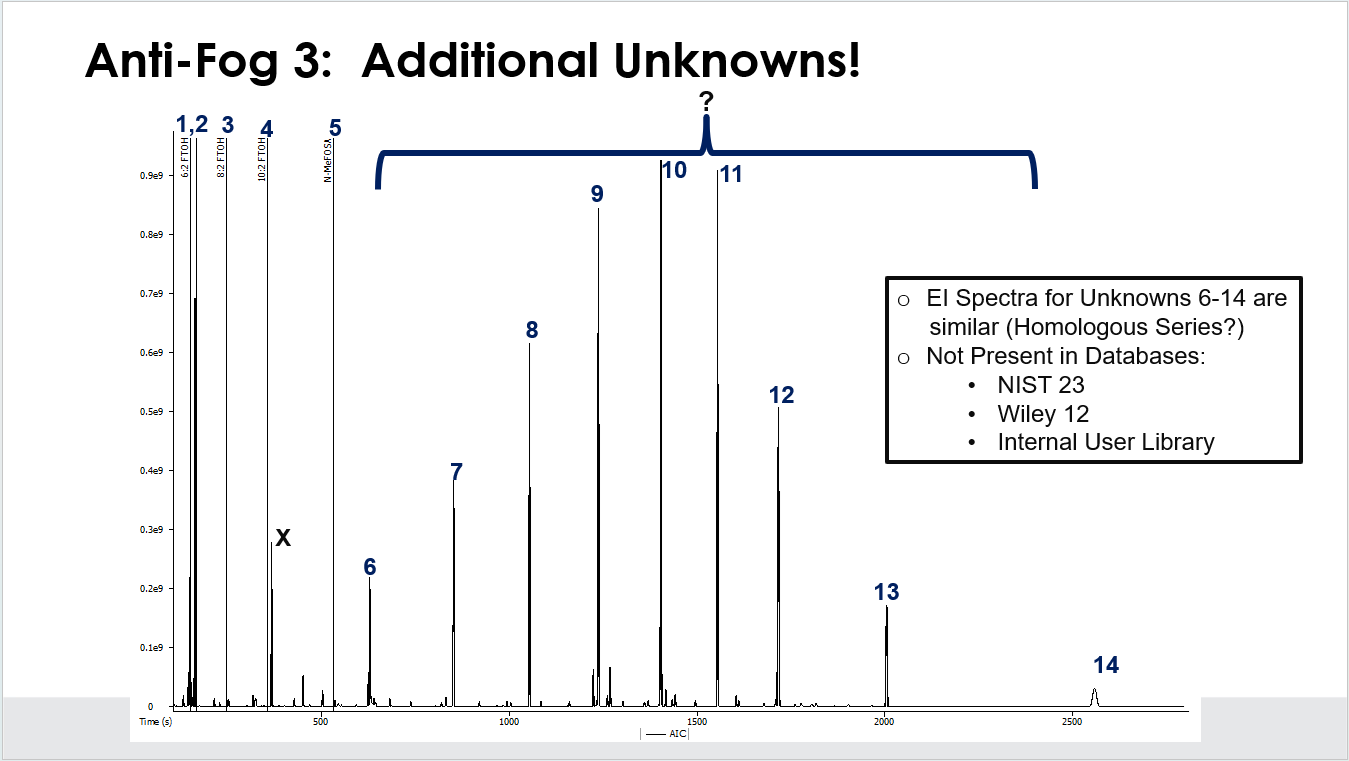
More information was needed to annotate these PFAS that did not appear in commercial libraries, so Dr. Alonso turned to the Pegasus HRT to inspect these unknown analytes.
Further exploration with the HRT
LECO’s Pegasus HRT combines chemical ionization with high-resolution, accurate mass analysis (HRAM) so that the most complex samples can be characterized with confidence. Running the samples on the HRT provided Dr. Alonso with valuable information, like elemental composition, ring double-bond equivalents, and isotopic fidelity checks on ion clusters.

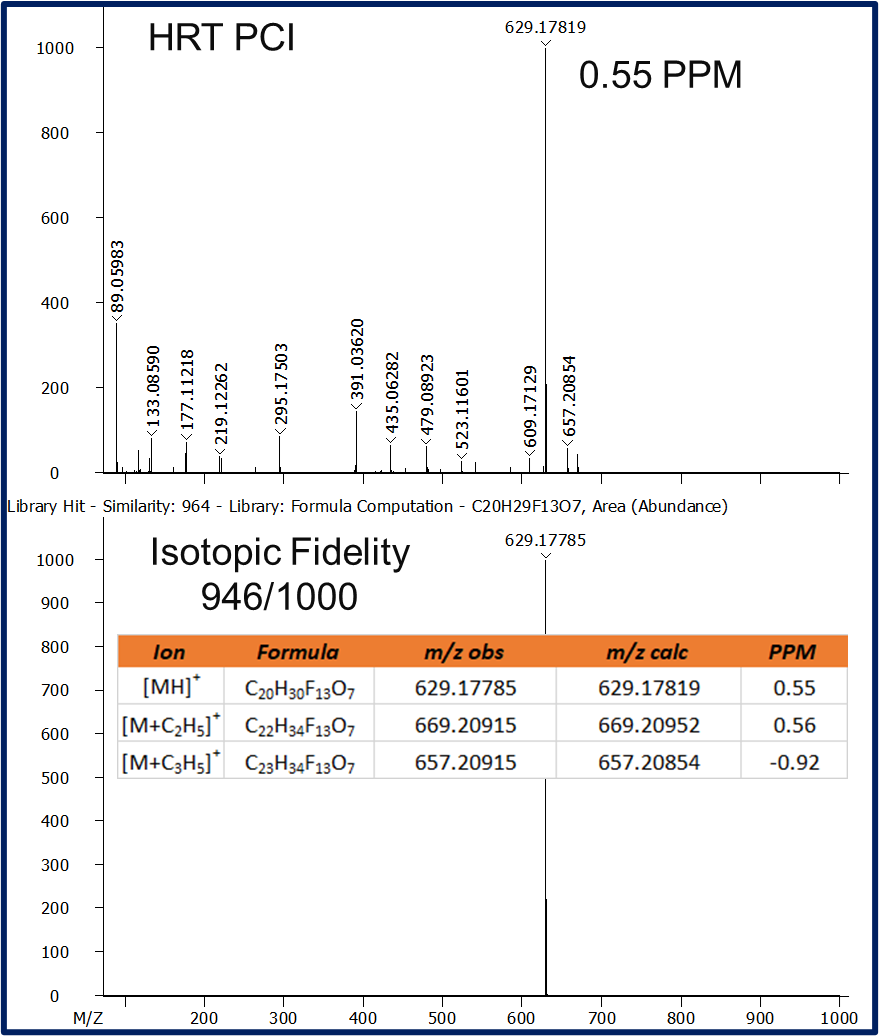
Results/Conclusions
After looking over the new findings, Dr. Alonso was able to annotate the molecules as a series of unique PFAS compounds registered with the CompTox chemical dashboard – but entirely absent from GC-MS spectral libraries.
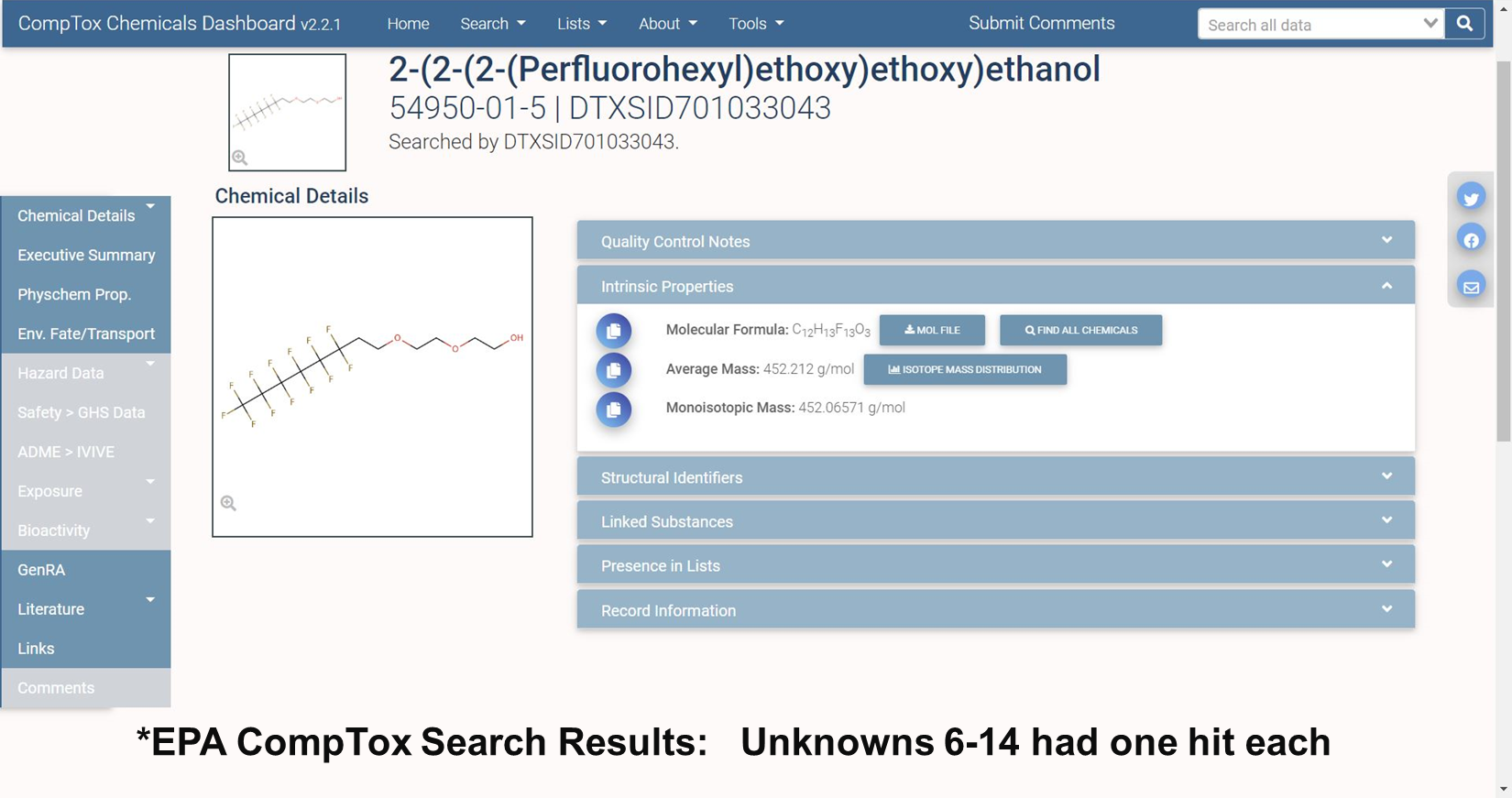
This is likely due to the lack of research that has been done with GC-MS, but we now know there is much that can be discovered regarding PFAS with this method. Both the BT and the HRT played a significant role in characterizing the anti-fog solutions. Their unique attributes credit them each to being wonderful tools for non-target analysis. Here, the HRT shines, as it’s ion source flexibility and elemental composition clues render it the perfect instrument for discovering the “unknown unknowns.”
Want to learn more about our instruments for Separation Science and GC-MS? Browse our solutions here.
1. Carol F. Kwiatkowski, David Q. Andrews, Linda S. Birnbaum, Thomas A. Bruton, Jamie C. DeWitt, Detlef R. U. Knappe, Maricel V. Maffini, Mark F. Miller, Katherine E. Pelch, Anna Reade, Anna Soehl, Xenia Trier, Marta Venier, Charlotte C. Wagner, Zhanyun Wang, and Arlene Blum
Environmental Science & Technology Letters 2020 7 (8), 532-543DOI: 10.1021/acs.estlett.0c00255






